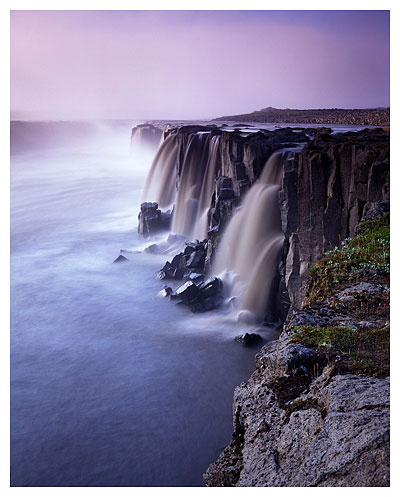Ok, so yesterday I mentioned how I prefer to visualise without the aid of a preview screen on the back of a camera (note that I am not referring to digital or film here - I want to keep the medium out of the argument for the time being).

But camera choice does affect visualisation. I know, I have a tendency to say 'the camera does not matter', but this is really my way of saying 'focus less on buying gear and more on making images'. So in what way does a camera affect how we visualise a scene?
Aspect Ratio
Use the same aspect ratio camera for long enough, and we start to 'see' pictures in that format. I find on my workshops that I will often 'see' a scene that I know will work really well on my camera (which is 6x7 aspect ratio) but when I try to show the composition to participants and set it up using their 3:2 aspect ratio cameras, I often find I can't get the composition to work the way I was seeing it. I've become very used to seeing everything around me in 6x7 aspect ratio.
I think this is an important point because although we are influenced by the aspect ratio of the camera we are using, the camera may not suit our pre-programmed way of seeing. In short, we need to match the camera to the photographer's way of seeing sometimes.
Personally, when I moved from 35mm to 6x7, I noticed I seemed to get along much better. I think I have a pre-disposition to seeing in that format. Whereas others may not.
A good photographer can be hampered by using a camera that does not compliment his way of seeing. I've certainly had people on my workshops using 3:2 cameras where I've felt they should be shooting square format. Everything about how they compose a shot often leads me to want to crop off part of the scene.
Lens behaviour
Understanding how the lenses we own render a scene, is important in aiding visualisation.
I think this is why I prefer to use prime lenses. I have 3 in total. 50, 80 and 150 mm focal lengths. They are the equivalent of 25, 40, 75 in 35mm terms.
Using primes makes me hunt a scene with my feet rather than with a zoom ring. So it aids me in finding better compositions. In terms of visualisation though, when I turn up at a scene, I instantly know which lens to use - because I seem to flip in my mind from 50, 80 or 150.
I'm always saying that simplifying or reducing the amount of equipment aids in making better pictures, and I think in terms of visualisation, having less choice, helps us get to know and visualise with a small set of lenses.
